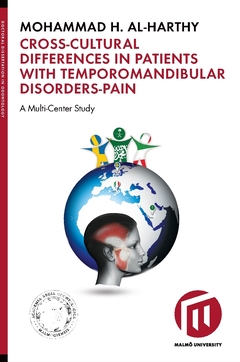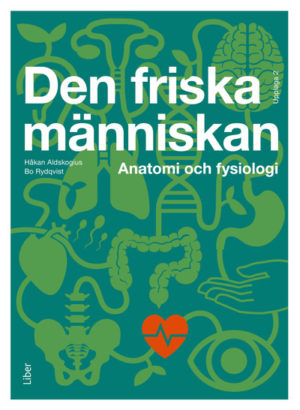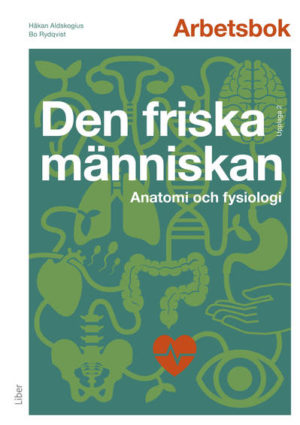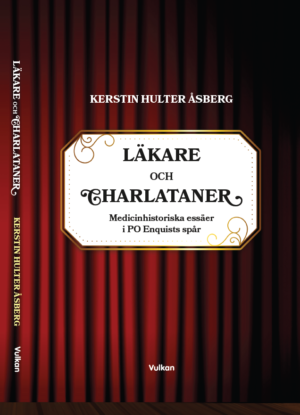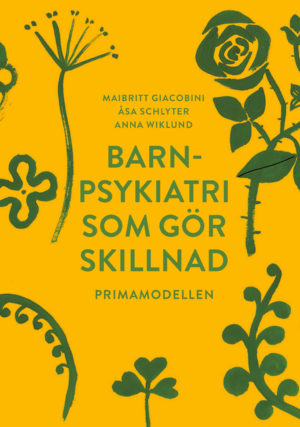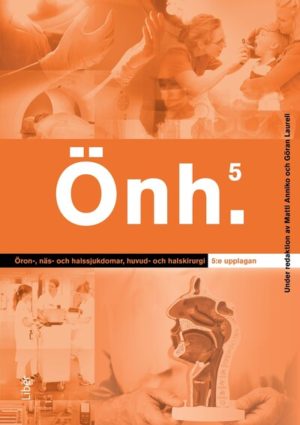The overall objective of this thesis was to investigate patients with TMD-pain and TMD-free controls in three cultures (Saudi Arabia, Sweden, and Italy) to determine the influence of culture on and crosscultural differences in pain prevalence and intensity, sensitivity to mechanical and electrical stimulation, pain-related disability for four comorbid pain conditions (back, head, chest, and stomach pain) in the last 6 months, and the type of treatment that patients with TMD pain received.
The specific aims were:
(i) To determine the frequency of TMD pain in Saudi Arabians (I).
(ii) To compare psychophysical responses to mechanical and electrical stimuli in female TMD patients and TMD-free controls, nested within each of three cultures (Saudi, Italian, and Swedish) (II).
(iii) To assess pain prevalence and intensity, and pain-related disability associated with comorbid pain conditions by testing for the interaction effect between three different cultures and case-status (III).
(iv) To assess the type of treatment that female patients with TMD-pain in three cultures received, and their beliefs about the factors that contribute to and aggravate TMD, as well as the factors that are important to include in TMD treatment (IV).
Study (I) material included 325 Saudi Arabian patients (135 males, 190 females) aged 20–40, who were referred to the Specialist Dental Center at Alnoor Specialist Hospital, Makkah and answered a history questionnaire. We offered a clinical examination to patients reporting TMD pain in the last month and assessment according to the Arabic version of the Research Diagnostic Criteria for TMD (RDC/TMD).
Of these patients, 58 (18%) reported TMD pain and 46 underwent clinical examination. All TMD pain patients had a diagnosis of myofascial pain, and 65% had diagnoses of arthralgia or osteoarthritis. The TMD-pain group reported high levels of both headaches/migraines in the last 6 months (93%) differing significantly (P < 0.01) from the TMD-pain-free groups.
All pain group were suffering at least from one TMD subdiagnosis. The TMD-pain group had high depression and somatization scores but low disability grades on the Graded Chronic Pain Scale (GCPS).
Studies (II-IV) compared 122 female cases of chronic TMD pain (39 Saudis, 41 Swedes, and 42 Italians) to equal numbers of agematched TMD-free controls. The study (II) measured pressure pain threshold (PPT) and tolerance (PPTo) over one hand and two masticatory muscles, and electrical perception threshold, electrical pain threshold (EPT), and electrical pain tolerance (EPTo) between the thumb and index fingers. Italian females reported significantly lower PPT in the masseter muscle than the other cultures (P < 0.01) and in the temporalis muscle than Saudis (P < 0.01). Swedes reported significantly higher PPT in the thenar muscle than the other cultures (P = 0.017). Italians reported significantly lower PPTo in all muscles than Swedes (P < 0.01) and in the masseter muscle than Saudis (P < 0.01). Italians reported significantly lower EPTo than other cultures (P = 0.01). TMD cases reported lower PPT and PPTo than TMD-free controls in all three muscles (P < 0.01).
Cultural differences appeared in PPT, PPTo and EPTo. Overall, Italian females reported the highest sensitivity to both mechanical and electrical stimulation, while Swedes reported the lowest sensitivity. Mechanical pain thresholds differed more across cultures than did electrical pain thresholds. Cultural factors may influence response to type of pain test.
In Study (III), self-report questionnaires assessed back, chest, stomach, and head pain for revalence, intensity, and interference with daily activities in the last 6 months. Logistic regression assessed binary variables and ANCOVA provided parametric data analysis, adjusting for age and education.
Back pain was the only comorbid condition that varied in prevalence across cultures; Headache was the most common comorbid pain condition in all three cultures; the average head pain intensity was lower, however, among Swedes compared to Saudis (P = 0.029). The total number of comorbid conditions did not differ cross-culturally, but the TMD group reported more comorbid conditions compared to TMD-free controls (P < 0.01). For both back and head pain, TMD cases reported higher average pain intensities (P < 0.01) and interference with daily activities (P < 0.01) than TMD-free controls. Among TMD patients, Italians reported the highest pain-related disability (P < 0.01).
This study indicates that culture influences the comorbidity of common pain conditions with TMD. The cultural influence on pain expression is reflected in different patterns of physical representation.
Study (IV) compared patient characteristics, treatment beliefs, and type of practitioner advice received before referral for TMD treatment. Patients responded to a questionnaire that assessed treatments received, then completed an explanatory model form about their beliefs regarding which factors contribute to and aggravate TMD, and what factors are important for treatment to address.
Of the various treatments, Swedes most commonly sought behavioral therapy and Saudis Islamic medicine (P < 0.01). Swedes received acupuncture and occlusal appliance therapy significantly more than Saudis (P < 0.01) or Italians (P = 0.012). Italians were significantly less likely than Saudis and Swedes (P = 0.042) to believe that TMD pain treatment should address behavioral factors.
Among Saudi, Italian, and Swedish females with chronic TMD pain, culture did not influence the type of practitioner consulted before visiting a TMD specialist or their beliefs about factors contributing to or aggravating their pain. Overall, the treatments patients received and beliefs about behavioral factors differed cross-culturally. Islamic medicine was fairly common among Saudis and acupuncture was common among Swedes.
